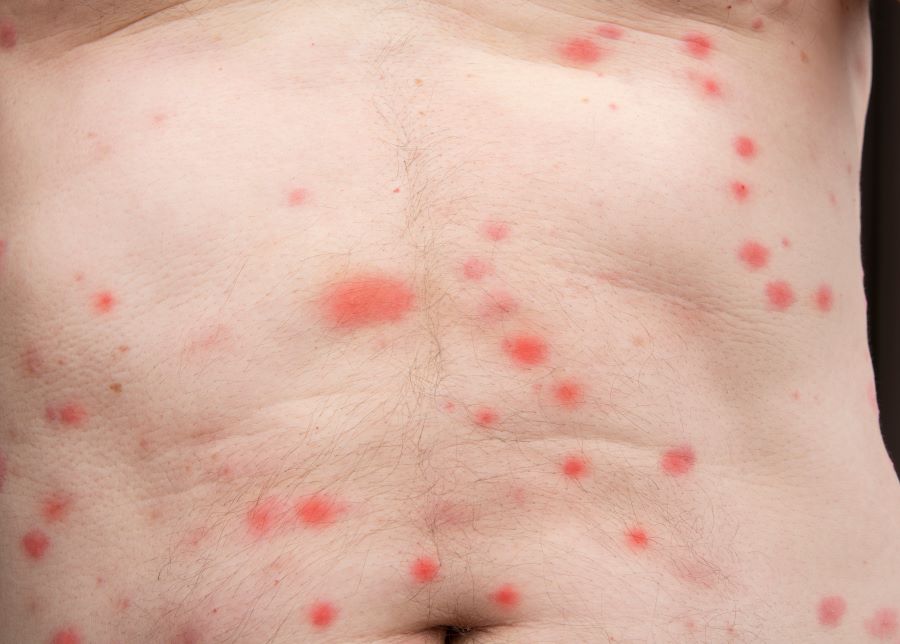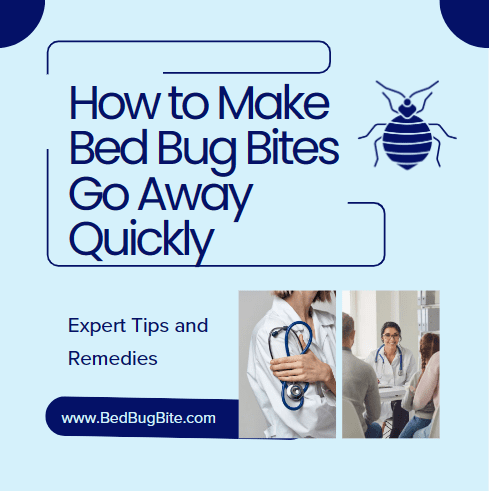Introduction
Bed bugs, those pesky nocturnal insects, have been a nuisance to humanity for centuries, often associated with sleepless nights and itchy welts. Across the world, bed bugs have established their notorious reputation, making it essential for people to be well-informed about their habits, prevention, and treatment. According to a report from the Environmental Protection Agency, bed bugs were once nearly eradicated from developed countries in the mid-20th century. Still, they have made a significant comeback in recent years. With the growing need to treat and manage bed bug bites, this guide is dedicated to enlightening readers on immediate relief and long-term solutions. As we delve into the intricacies of bed bug bites, we aim to provide a comprehensive approach, drawn from expert knowledge and reliable research, ensuring you receive the best advice to tackle these vexing insects.
Understanding Bed Bug Bites
When bed bugs feed, they pierce the skin with their elongated beak, seeking blood as their primary food source. This process, while painless at the moment due to the numbing agents in the bug’s saliva, often results in visible and itchy welts on the skin.
The Biology of a Bed Bug Bite: Why They Bite and What Happens
Bed bugs are primarily nocturnal creatures that come out to feed when their hosts, which include humans, are asleep. Their bites are not a sign of poor hygiene or an unclean environment, but rather a consequence of their survival instincts. According to PestWorld, when a bed bug bites, it injects an anticoagulant (to prevent blood clotting) and an anesthetic (to prevent the host from feeling the bite). This combination is what leads to the itching and inflammation that most victims experience.
Common Symptoms and Reactions to Bed Bug Bites
While reactions to bed bug bites can vary among individuals, common symptoms include small, raised welts that are often red and itchy. Some individuals might experience more severe reactions, such as blistering, or even allergic responses. It’s also noteworthy that while some people may show these obvious signs, others might not exhibit any symptoms at all. This variability in reactions underscores the importance of understanding and recognizing potential bed bug infestations, even in the absence of bite marks.

Immediate First Aid for Bed Bug Bites
Addressing bed bug bites promptly is crucial, not just for alleviating discomfort but also for minimizing the risk of secondary infections. Early and effective intervention can ensure that the bite doesn’t escalate into a more serious concern and can speed up the healing process.
Why Immediate Care is Crucial
Swiftly attending to bed bug bites is essential for several reasons. One primary concern is the body’s inflammatory response, which can lead to itching, swelling, and discomfort. Left unchecked, this itchiness can lead to scratching, which can break the skin and introduce bacteria, risking secondary infections. According to Mayo Clinic, untreated bed bug bites can also lead to complications like skin infections, allergic reactions, or even anemia from severe infestations.
Cleaning the Bite: Best Practices and Recommendations
The first step in managing a bed bug bite is ensuring it’s clean. Begin by gently washing the area with soap and warm water. This not only removes potential pathogens but also helps in reducing the itching. After cleaning, pat the area dry with a clean towel, ensuring not to rub or irritate the skin further.
Cooling the Area: Benefits and Methods
Cooling can play a pivotal role in soothing the skin and reducing inflammation. Applying a cold compress or a cloth dipped in cold water can provide immediate relief from itching and swelling. Ice packs are also effective, but it’s crucial to wrap them in a cloth before application to prevent ice burns. The cold helps constrict blood vessels, reducing redness and inflammation, and offering a numbing effect to ease discomfort.
Topical Remedies for Fast Relief
Bites from bed bugs can often be maddeningly itchy and inflamed. Thankfully, a variety of topical remedies, both commercial and natural, can be applied directly to the skin to provide relief. These solutions work by reducing inflammation, soothing itching, and in some cases, offering antiseptic properties to ward off infections.
Over-the-Counter Solutions: Creams, Gels, and Lotions
There’s a plethora of over-the-counter products formulated specifically to treat insect bites, including those from bed bugs. One of the most commonly recommended ingredients is hydrocortisone. According to the American Academy of Dermatology, creams or gels containing hydrocortisone can help reduce itching and inflammation. Calamine lotion, with its soothing properties, is another favorite, offering relief from itching and discomfort. When choosing a product, it’s essential to follow the manufacturer’s guidelines and ensure you’re not allergic to any of its components.
Natural Remedies: Aloe Vera, Witch Hazel, and Tea Tree Oil
For those leaning towards natural treatments, several remedies have stood the test of time. Aloe vera, known for its cooling and anti-inflammatory properties, can soothe the skin and reduce redness. Witch hazel, a natural astringent, can help decrease inflammation and alleviate itching. Meanwhile, tea tree oil, with its antiseptic attributes, can prevent infections if the skin has been broken by scratching. However, when using natural remedies, especially essential oils like tea tree, it’s crucial to conduct a patch test to avoid potential allergic reactions.
Benefits and Potential Side Effects of Each Remedy
While these remedies offer quick relief, they’re not without their caveats. Over-the-counter creams, especially those with hydrocortisone, should not be overused, as prolonged use can thin the skin. On the other hand, while natural remedies tend to have fewer side effects, they can occasionally cause allergic reactions or skin irritation. It’s always advisable to read labels, follow guidelines, and if unsure, consult with a dermatologist or healthcare provider.
Oral Medications: When and How to Use Them
While topical remedies are often the first line of defense against the itchiness and inflammation of bed bug bites, in certain cases, oral medications can be beneficial. These medicines work from the inside, targeting the body’s systemic reactions to the bites, and can be especially useful when dealing with severe reactions or preventing complications.
Antihistamines for Allergic Reactions
An allergic response to bed bug bites, though uncommon, can manifest as intense itching, swelling, or even hives. In such cases, antihistamines can be a game changer. Drugs like diphenhydramine (commonly known as Benadryl) act by blocking the body’s histamine response, effectively reducing allergic symptoms. As the Cleveland Clinic points out, while antihistamines can be incredibly effective, they might also cause drowsiness, so it’s vital to be cautious if you need to be alert or operate machinery.
Pain-Relief Medications: What to Take and Precautions
Sometimes, the inflammation from the bites can lead to pain. Over-the-counter pain relievers, such as ibuprofen or acetaminophen, can help alleviate this discomfort. However, as with any medication, it’s essential to follow the recommended dosage and be aware of potential interactions with other drugs you might be taking.
The Role of Antibiotics: Preventing Secondary Infections
If a bed bug bite becomes excessively scratched or infected, it may open the door for bacterial infections. In these instances, a healthcare provider might prescribe antibiotics to tackle the infection. It’s imperative to take the entire course of antibiotics as directed, even if symptoms improve, to ensure the bacteria are entirely eradicated and to prevent antibiotic resistance.
Incorporating oral medications into your bed bug bite treatment plan can offer enhanced relief, especially in more severe cases. Being informed about when and how to use these medicines, alongside their benefits and precautions, can empower individuals to make the best choices for their well-being. As always, consulting with a healthcare professional when in doubt ensures safety and efficacy in treatment.
Preventing Scratching and Secondary Infections
Scratching those infuriatingly itchy bed bug bites might offer a momentary relief, but it can lead to a cascade of complications. From exacerbating inflammation to introducing infections, the repercussions of scratching are not to be taken lightly. Understanding the implications and adopting strategies to prevent scratching can significantly impact the healing process of these bites.
Why Scratching Exacerbates the Problem
The act of scratching can break the skin’s protective barrier, allowing bacteria to enter and cause infections. Moreover, scratching can cause further inflammation, leading to increased redness, swelling, and even potential scarring. According to the American Academy of Dermatology, repeatedly scratching a bite can cause the skin to thicken, a condition known as lichenification, which can further perpetuate the itch.
Tips to Resist the Urge to Scratch
- There are several strategies one can employ to deter the act of scratching:
- Keep nails short and clean to reduce damage if scratching occurs inadvertently.
- Wear light gloves or mittens during sleep to prevent nocturnal scratching.
- Distract the mind by engaging in activities that occupy both hands.
- Use topical treatments like calamine lotion or hydrocortisone cream to alleviate itching.
- If the itch is overwhelming, a cold compress can offer immediate relief by numbing the area.
- Covering and Protecting the Bite
- Protecting the bite from external irritants can speed up healing. One can:
- Apply a sterile bandage or dressing over the bite.
- Avoid tight clothing that might rub against the bite and cause irritation.
- Ensure the bite remains clean and free from contaminants.
Long-Term Strategies to Minimize Recurrence
The immediate treatment of bed bug bites is undoubtedly vital, but it’s equally essential to implement long-term strategies to minimize the risk of future infestations. Recognizing, addressing, and preempting bed bug issues not only ensures a bite-free existence but also contributes to overall peace of mind in one’s living spaces.
Recognizing and Dealing with a Bed Bug Infestation
Early detection of bed bugs can significantly reduce the extent of an infestation. Indicators include:
- Small, rusty spots on mattresses or bed linens, which are bed bug excrement.
- Shed skins or tiny eggshells in places where bed bugs hide.
- A musty odor, indicative of bed bug pheromones.
Utilizing resources like the EPA’s guide on bed bug appearance and life cycle can help in identifying an infestation early.
Regular Inspections and Preventive Measures
Proactivity is key in bed bug prevention. Adopt practices like:
- Regularly inspecting sleeping and resting areas, including mattresses, bed frames, and couches.
- Vacuuming frequently to remove any potential bed bugs.
- Using protective covers designed to prevent bed bugs on mattresses and box springs.
- Being cautious when bringing second-hand furniture into your home.
Seeking Professional Help When Necessary
If signs of a significant infestation are evident, it might be time to call in the experts. Professional exterminators have specialized equipment and knowledge to tackle extensive bed bug issues, ensuring thorough eradication. Some infestations, especially those well-established, may be beyond the scope of home remedies and might require more aggressive treatments.
Conclusion and Final Thoughts
Dealing with bed bugs, while undeniably challenging, isn’t an insurmountable task. As we’ve journeyed through understanding their biology, immediate remedies, and long-term strategies, it becomes evident that knowledge is our most potent weapon against these pests. By staying informed, proactive, and seeking expert guidance, one can navigate the bed bug challenge with confidence and efficacy.
Recap of the Comprehensive Approach to Treating Bed Bug Bites
Remember, the key lies in a multi-faceted approach:
- Quick, effective first aid for immediate relief.
- Harnessing the power of both over-the-counter and natural topical treatments.
- Considering oral medications for severe reactions.
- Adopting preventive measures to curtail future infestations.
Parting Words on the Importance of Understanding Bed Bugs
While the journey of managing and preventing bed bug bites can be daunting, remember that you’re not alone. Armed with knowledge, resources, and community support, you can reclaim your space and peace of mind. We hope this guide serves as a beacon of hope and a comprehensive resource in your endeavors against bed bugs.




